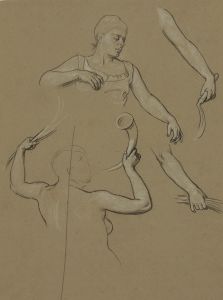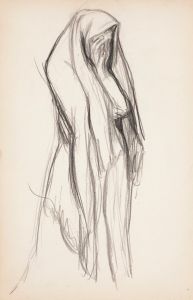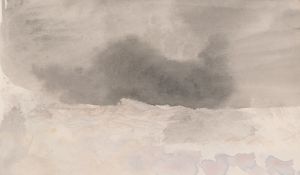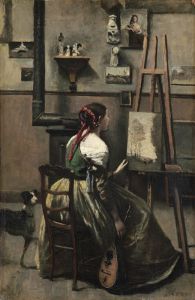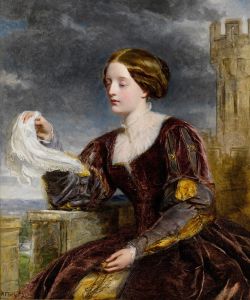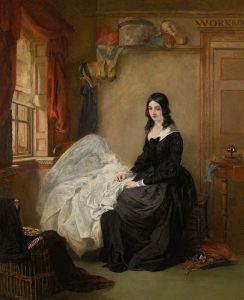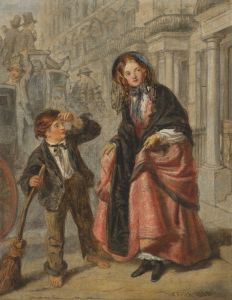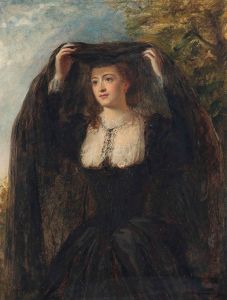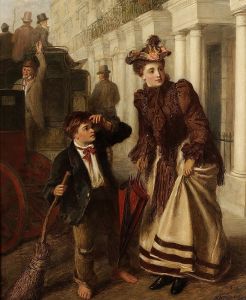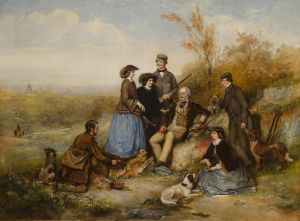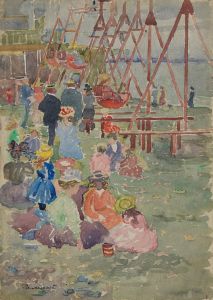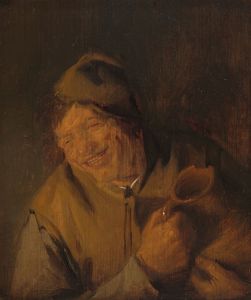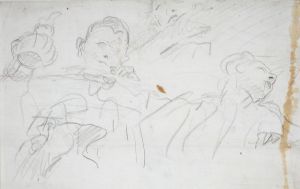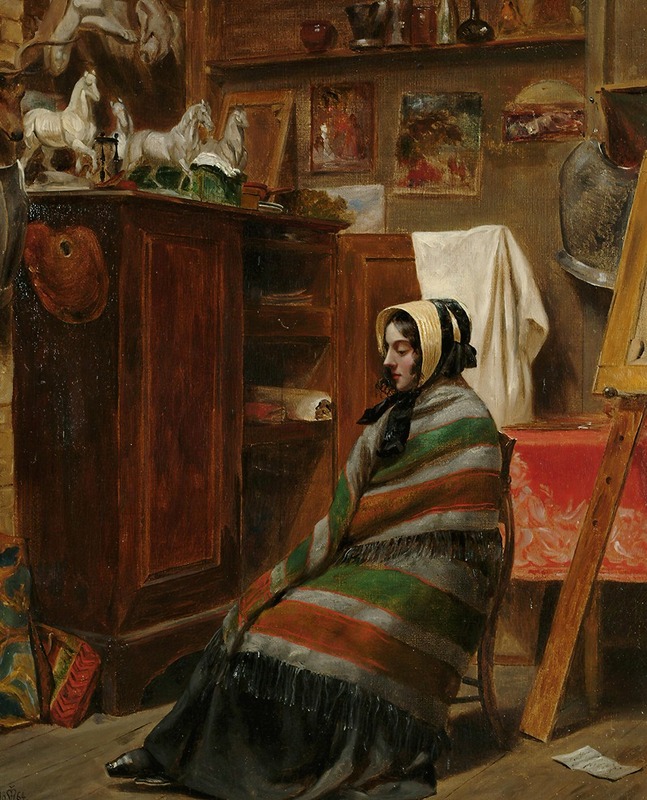
Model In A Cluttered Studio
A hand-painted replica of William Powell Frith’s masterpiece Model In A Cluttered Studio, meticulously crafted by professional artists to capture the true essence of the original. Each piece is created with museum-quality canvas and rare mineral pigments, carefully painted by experienced artists with delicate brushstrokes and rich, layered colors to perfectly recreate the texture of the original artwork. Unlike machine-printed reproductions, this hand-painted version brings the painting to life, infused with the artist’s emotions and skill in every stroke. Whether for personal collection or home decoration, it instantly elevates the artistic atmosphere of any space.
William Powell Frith was a renowned English painter, best known for his depictions of Victorian life. However, there is no widely recognized painting titled "Model In A Cluttered Studio" attributed to him. Frith's most famous works include "The Derby Day," "The Railway Station," and "The Marriage of the Prince of Wales." These paintings are celebrated for their detailed portrayal of contemporary life and society, capturing the essence of the Victorian era with a keen eye for detail and narrative.
Frith was born on January 9, 1819, in Aldfield, North Yorkshire, England. He studied at the Royal Academy of Arts in London, where he honed his skills and developed a style that combined elements of genre painting with a narrative approach. His works often featured large crowds and intricate scenes that told a story, reflecting the social dynamics and cultural nuances of his time.
"The Derby Day," completed in 1858, is one of Frith's most acclaimed works. It depicts the bustling scene at the Epsom Derby, a major horse racing event, capturing a cross-section of Victorian society. The painting is notable for its attention to detail and the variety of characters it portrays, from the upper classes to the working poor, all gathered to witness the race.
Another significant work, "The Railway Station," painted in 1862, showcases the hustle and bustle of Paddington Station in London. This painting is a vivid representation of the impact of the railway on Victorian society, illustrating the excitement and chaos of travel during that era. Frith's ability to capture the essence of modern life and the transformative effects of industrialization is evident in this piece.
Frith's "The Marriage of the Prince of Wales" (1865) is another example of his narrative style. It commemorates the wedding of the future King Edward VII to Princess Alexandra of Denmark. The painting is a grand depiction of the royal event, filled with dignitaries and spectators, showcasing Frith's skill in rendering large, complex compositions.
Throughout his career, Frith was celebrated for his ability to capture the spirit of his age. His paintings are characterized by their meticulous attention to detail, vibrant storytelling, and the ability to convey the social atmosphere of Victorian England. Frith's work remains an important part of British art history, offering insights into the culture and society of the 19th century.
If "Model In A Cluttered Studio" were a lesser-known or recently discovered work by Frith, it would likely reflect his characteristic style, focusing on narrative and detail. However, without specific information or documentation about such a painting, it is not possible to provide an accurate description or analysis. Frith's legacy, nonetheless, continues to be celebrated for its contribution to genre painting and its vivid portrayal of Victorian life.





